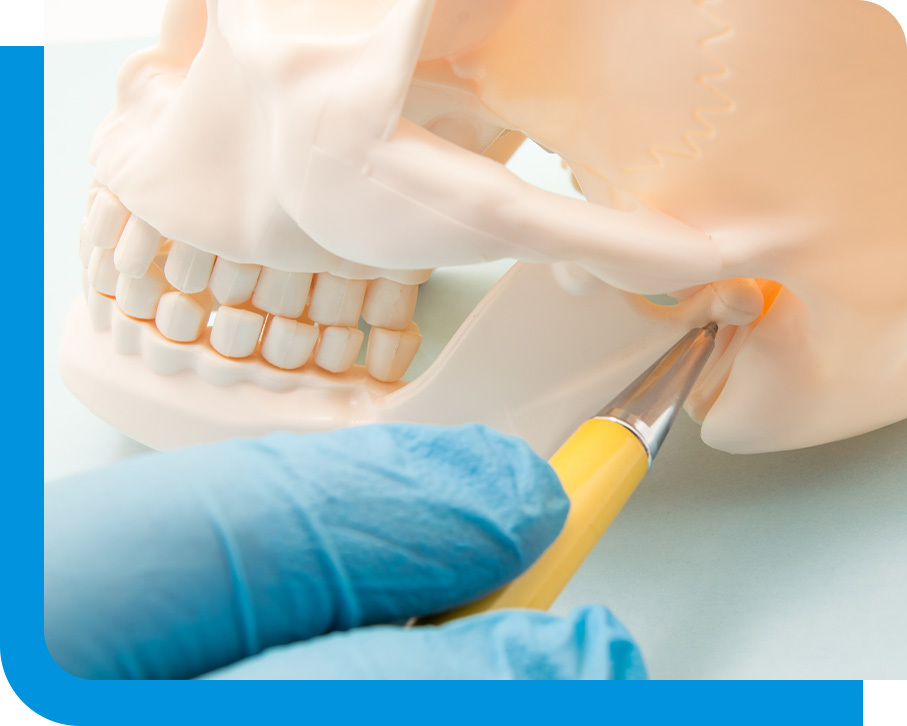TMJ

Temporomandibular Joint
The lower jaw’s (mandible’s) joint with the temporal bone of your skull is known as the temporomandibular joint, or TMJ. Chewing is one of the several jaw movements controlled by this joint. You might have temporamandibular dysfunction, or TMD, if the chewing muscles or the joint itself are giving you pain. Stress, persistent jaw clenching, or teeth grinding can all lead to TMD.
The following are a few signs of TMD:
- Pain when opening or closing mouth
- Trouble chewing
- Jaw becoming stuck open or shut
- Headaches or ear pain
- Clicking or popping sounds when opening your mouth
- Teeth Grinding
Only a doctor can tell you if you have TMD
because many of these symptoms are frequently linked to other health issues. Teeth grinding is a particularly troublesome symptom because it might result in additional issues. Long-term bruxism, or the grinding of the teeth, can wear away tooth enamel and reveal dentin. Compared to enamel, this substance is softer and more prone to deterioration. Excessive tooth grinding can also cause sensitivity to hot and cold meals and beverages.

Invite Yourself in for a Consultation if You Think You Might Have TMD
We can aid with your diagnosis and offer symptom alleviation. Painkillers and hot/cold compresses are temporary solutions to alleviate pain symptoms. To avoid or decrease the consequences of teeth grinding during night, a night guard can be utilized. This might result in a longer-lasting answer.